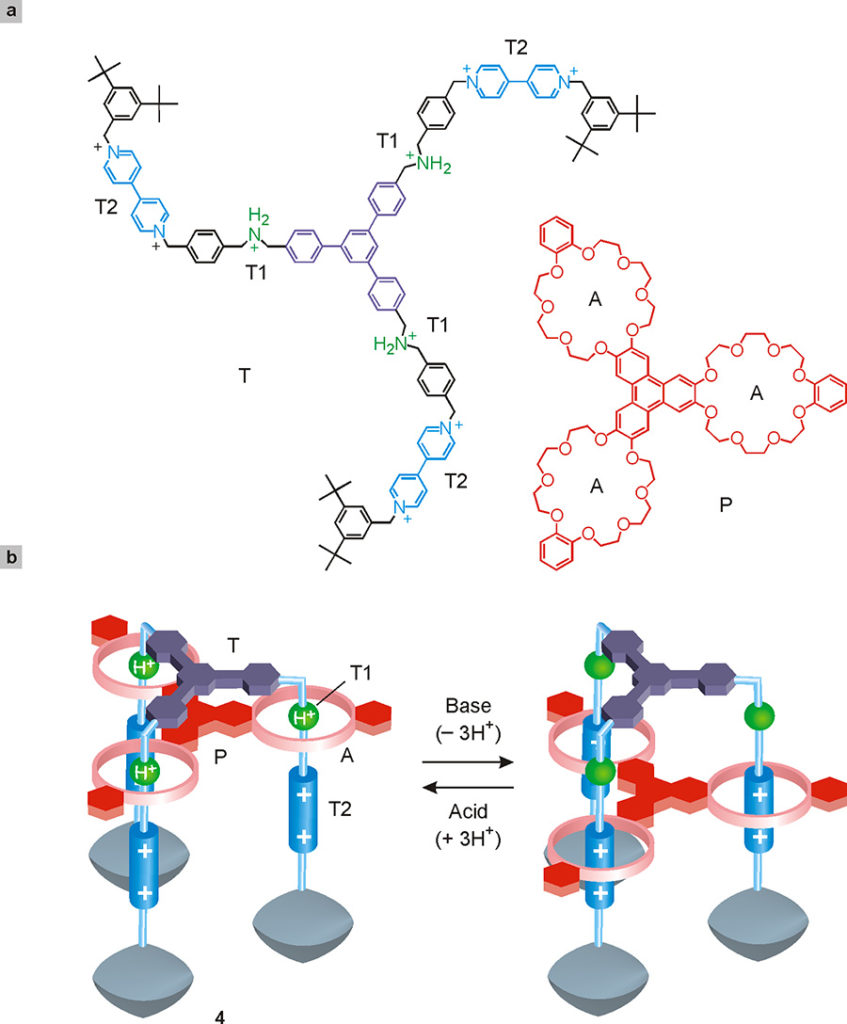Continue from previous page
The nanoelevator
The experience gained with the simplest prototypes of artificial nanomachines has allowed scientists to design and build systems of ever-increasing complexity. For example, the three-dimensional development of a shuttle powered by chemical energy has led our research group, again in collaboration with Stoddart’s, to build what can be called a nanometric elevator (Badjic 2004)1Badjic, J. D., Balzani, V., Credi, A., Silvi, S., Stoddart, J. F. (2004) A molecular elevator, Science, 303, 1845-1849..

A nanometric elevator. (a) Simplified structural formulas of the two components of the system, which can be considered a three-dimensional evolution of a molecular shuttle similar to the one illustrated in Fig. 20. A frame with three branches T, each of which contains two stations T1 and T2, is assembled with the three-ring P platform. In the supramolecular system thus obtained (4) the three branches of the frame are inserted into the three rings of the platform, as illustrated schematically in (b). The presence of the stoppers at the lower ends of the branches ensures the integrity of the structure. The position assumed by the three rings of P along the three branches of T can be modified by adding a base or an acid.
As shown in Fig. 22a, it consists of a three-branched frame (T), each of which contains two stations – an ammonium (T1) and a bipyridinium (T2) ion – and a molecular platform (P) obtained from the union of three ring compounds A. The three branches of T are inserted in the three rings of P, giving rise to a triple joint structure (4) in which the rings of the platform surround the ammonium stations of the frame, thanks to the presence of hydrogen bonds. However, if a base is added, the ammonium units T1 lose a hydrogen ion (H+) and, as a consequence, the ability to interact with the rings of P; the latter are therefore free to move and encircle the bipyridinium units T2, with which they give a donor-acceptor interaction. By subsequent addition of an acid (H+) he system returns to the initial structure. Schematically (Fig. 22b), the system can therefore be represented as a platform hinged on three columns that rises and falls between two levels, identified by the T1 and T2 stations, following commands (variations in acidity, or pH) coming from the exterior. The molecular elevator aroused great curiosity among the experts, and is depicted in the poster of the 2016 Nobel Prize in Chemistry (Fig. 17)2See Fig. 17 in Chap. 3. Artificial Molecular Machines..


